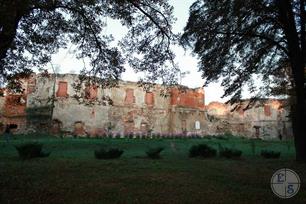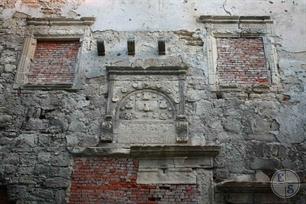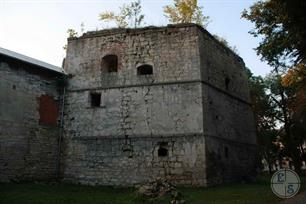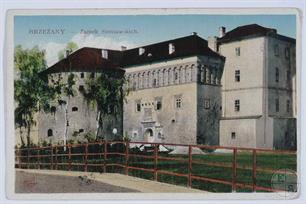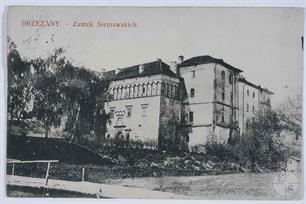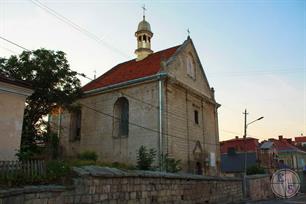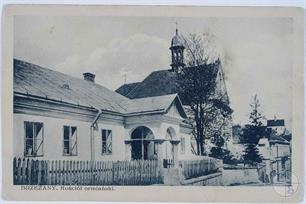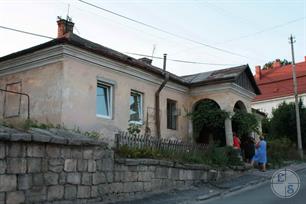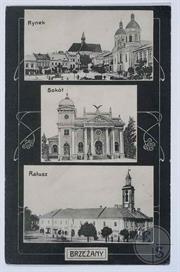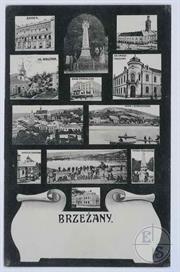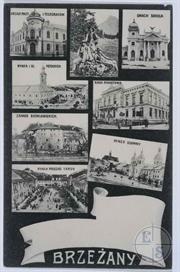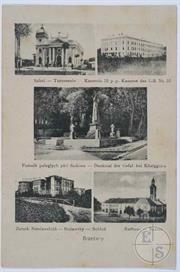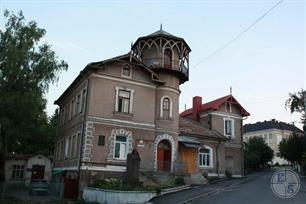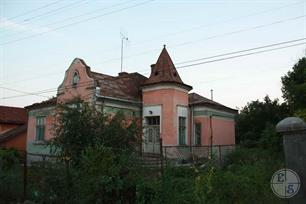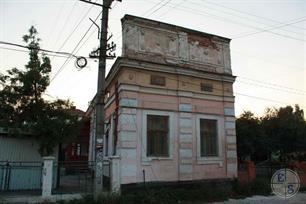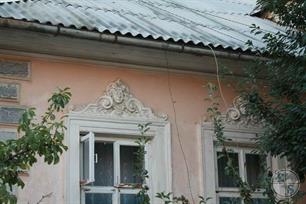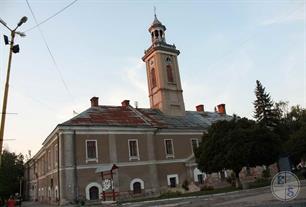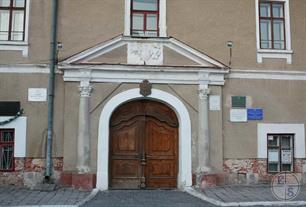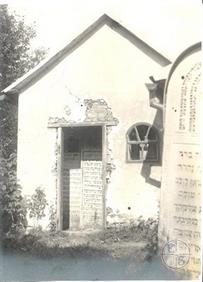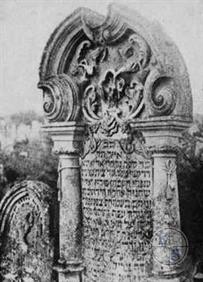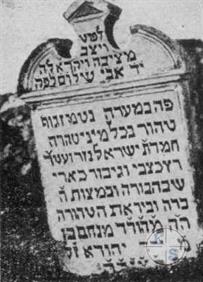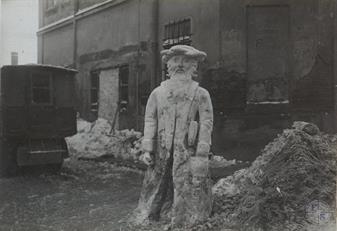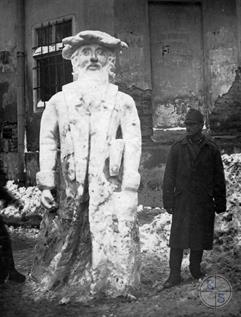Berezhany
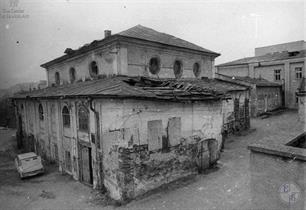 |
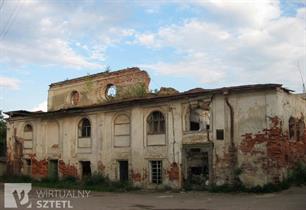 |
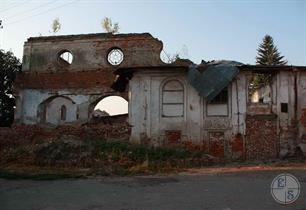 |
| Great Synagogue, 1992 | Great Synagogue, beg. 2000s | Great Synagogue, 2013 |
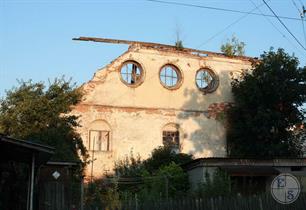 |
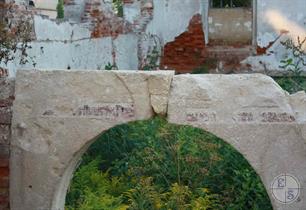 |
 |
| Only ruins remained from the building | ||
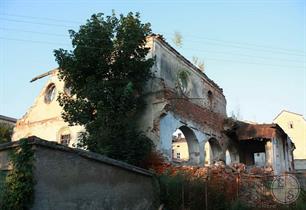 |
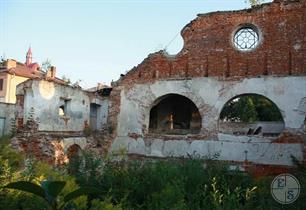 |
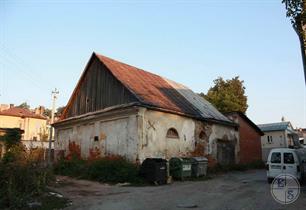 |
| Beit-Midrash, 2013 |
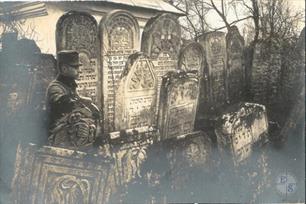 |
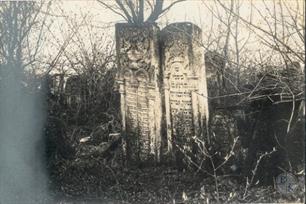 |
 |
| Jewish cemetery. Photo was taken by Austrian soldiers during the 1st World War | ||
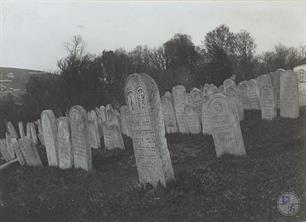 |
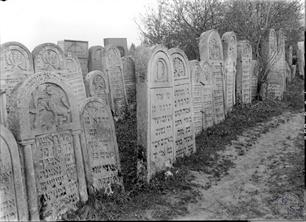 |
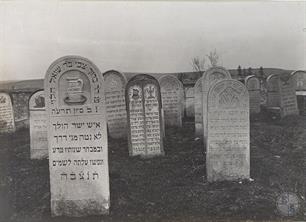 |
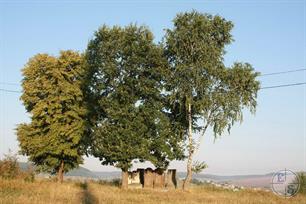 |
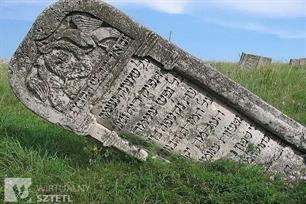 |
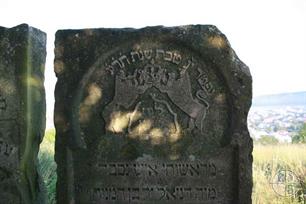 |
| Jewish cemetery, 2013 |
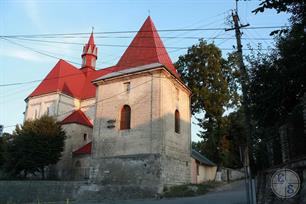 |
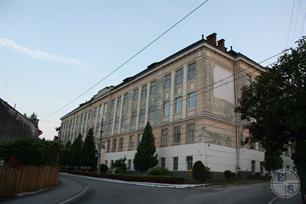 |
 |
| Defense Church of St. Peter and Paul | Gymnasium | The local branch of the Sokol gymnastic society has already been gone |
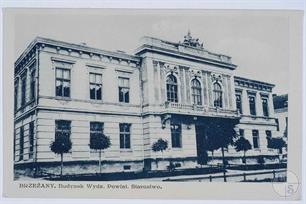 |
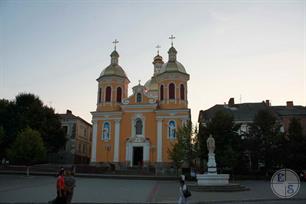 |
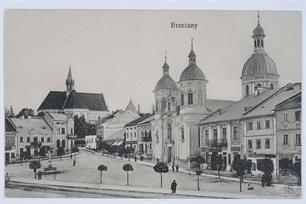 |
| The building of the district council | Greek-Catholic Church |
In Berezhany you can see many beautiful old villas and just a pretty old development.
In the suburbs of Berezhany with a wonderful name - Ray (Paradise), in the park preserved the former hunting palace of Pototsky.
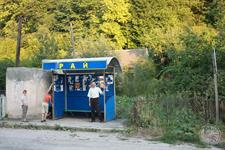 |
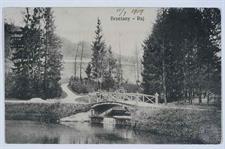 |
 |
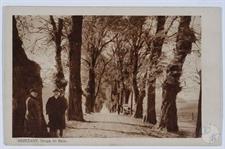 |
| Paradise on Earth is not a fantasy!) | "Road to Paradise" | ||
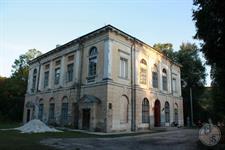 |
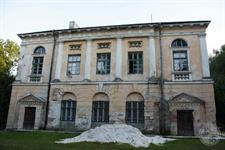 |
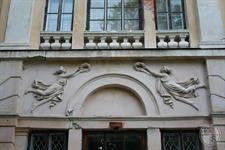 |
 |
| В старом парке находится дворец Потоцких | Дворец построен в 1709 г. на месте охотничьего замка Сенявских |
A few more Polish postcards of the beginning of 20th century
The first mention of Berezhany dates back to 1375, when these lands were transferred by Prince Vladislav Opolsky to the boyar Vasily Teptukhovich. In 1530, King Sigismund I allowed the crown cornet Nicholas Senyavsky, who owned these places, to found a city with Magdeburg rights on the site of a small settlement. During the ownership of the city by the Senyavsky family, the city was famous for its defense complex, as well as for its architectural flourishing.
Since 1772 Berezhany belonged to Austria; in 1781 they became a county town.
In November 1918 - July 1919 - the county center of the ZUNR. The initial command (general staff) of the UGA was located here. The Berezhany district was created - a military district on the territory of the ZUNR.
1919-1939 - Berezhany under Polish rule.
Since September 1939 - part of the Ukrainian SSR; until 2020 - the district center.
Since 1772 Berezhany belonged to Austria; in 1781 they became a county town.
In November 1918 - July 1919 - the county center of the ZUNR. The initial command (general staff) of the UGA was located here. The Berezhany district was created - a military district on the territory of the ZUNR.
1919-1939 - Berezhany under Polish rule.
Since September 1939 - part of the Ukrainian SSR; until 2020 - the district center.
Ternopil district, Ternopil region
The first mention of Berezhany Jews dates back to 1564. Information about the first synagogue, located in the 17th century near the city wall, has been preserved; next to it were a school, a hospital, etc.
In 1670, about 100 Jewish families lived here. At the beginning of the XVIII century mass settlement of Jews in Berezhany began.
The first synagogue in Berezhany was built in the 17th century. The second was erected in 1718 near the town gate; its remnants can be seen there to this day. Near the synagogue, there was a school, public bath, hospital, and hostel for poor travelers. Sometime later, east of the synagogue, two Batei Midrash (religious schools) and two prayer houses were built, for the Hassidim (disciples) of Rozlov and the Hassidim of Stratyn.
The town of Berezhany and its community grew stronger from year to year. From its establishment, the inhabitants of Brzezany were divided into 3 “Nations”: 1) Poles and Ruthenians, who were called Christians, 2) Armenians, and 3) Jews. Every “Nation” had its own administration and judicial system.
Early on in the history of Berezhany , the rights of Jews were limited. When the quarter known as Adamovka was established, the privilege granted in 1583 by the contemporary owner of Berezhany , Jadwiga of the Tarlow Sieniawski lineage, stated that bars in this part of town could not be leased to Jews. Also, Jews were not allowed to live in the market or purchase lots and houses from Christians. The purchase of real estate by Jews was subject to the approval of the mayor, who made sure that that property was previously owned by Jews or that no Christian wanted to buy that same property.
These rules, however, remained theoretical, since Jews bought houses in the market and the vicinity of the church as early as the beginning of the 17th century. This was made possible through special permits, which were issued in the palace accompanied by a recommendation of the Catholic priest.
The first rabbi in Berezhany was Mordechai Ha-Cohen, then Yehuda Kogen and Rabbi Moishe (later Chief Rabbi of Lvov). In the 1670s the rabbis were Zvi-Hirsh (later - the chief rabbi of Drogobych), in 1690-1700 - Yitzchok Krakover, in 1700-1840 - members of the Galperin family.
In the middle of the 18th century Jews owned all the shops in the central square, were engaged in wholesale trade and usury, and conducted large-scale agricultural trade products from Gdansk and cattle from Silesia, took part in large fairs in Poland.
In 1670, about 100 Jewish families lived here. At the beginning of the XVIII century mass settlement of Jews in Berezhany began.
The first synagogue in Berezhany was built in the 17th century. The second was erected in 1718 near the town gate; its remnants can be seen there to this day. Near the synagogue, there was a school, public bath, hospital, and hostel for poor travelers. Sometime later, east of the synagogue, two Batei Midrash (religious schools) and two prayer houses were built, for the Hassidim (disciples) of Rozlov and the Hassidim of Stratyn.
The town of Berezhany and its community grew stronger from year to year. From its establishment, the inhabitants of Brzezany were divided into 3 “Nations”: 1) Poles and Ruthenians, who were called Christians, 2) Armenians, and 3) Jews. Every “Nation” had its own administration and judicial system.
Early on in the history of Berezhany , the rights of Jews were limited. When the quarter known as Adamovka was established, the privilege granted in 1583 by the contemporary owner of Berezhany , Jadwiga of the Tarlow Sieniawski lineage, stated that bars in this part of town could not be leased to Jews. Also, Jews were not allowed to live in the market or purchase lots and houses from Christians. The purchase of real estate by Jews was subject to the approval of the mayor, who made sure that that property was previously owned by Jews or that no Christian wanted to buy that same property.
These rules, however, remained theoretical, since Jews bought houses in the market and the vicinity of the church as early as the beginning of the 17th century. This was made possible through special permits, which were issued in the palace accompanied by a recommendation of the Catholic priest.
The first rabbi in Berezhany was Mordechai Ha-Cohen, then Yehuda Kogen and Rabbi Moishe (later Chief Rabbi of Lvov). In the 1670s the rabbis were Zvi-Hirsh (later - the chief rabbi of Drogobych), in 1690-1700 - Yitzchok Krakover, in 1700-1840 - members of the Galperin family.
In the middle of the 18th century Jews owned all the shops in the central square, were engaged in wholesale trade and usury, and conducted large-scale agricultural trade products from Gdansk and cattle from Silesia, took part in large fairs in Poland.
From 1843, Shloimo Kluger, “Maggid from Brody”, became the rabbi of Berezhan, in 1865-70 - Yitzchok Shmelkis, from 1870 - Shoyl-Mordechai Shvadron (“Magarsham”), who was considered one of the greatest religious authorities of that time.
In the 1850s Meshulam-Shraga-Faivish Halperin founded a Hasidic dynasty in Berezhany. After his death, his son Avrom-Zerah-Yehuda became the head of the dynasty, then his grandson Yoel.
In the 1850s Meshulam-Shraga-Faivish Halperin founded a Hasidic dynasty in Berezhany. After his death, his son Avrom-Zerah-Yehuda became the head of the dynasty, then his grandson Yoel.
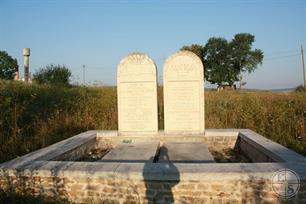 |
 |
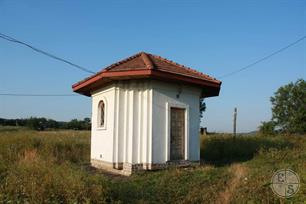 |
| The first Rabbi Berezhany, Shalom Mordechai Gacoen (died in 1630), and his wife | Ohel of Meshulam-Shraga-Faivish Halperin |
During World War I, many Jews from Berezhany fled deep into Austria-Hungary. Berezhany was captured by the troops of the Russian army and almost completely burned.
After the withdrawal of the Russian troops, the Jews began to return to Berezhany.
In 1922, a Jewish-Polish association of merchants was created.
In Berezhany there were 40 Jewish lawyers, 4 doctors, 2 pharmacists, 2 judges, 3 gymnasium teachers.
In 1922, a Jewish sports club began to operate.
On September 20, 1939, units of the Red Army entered Berezhany. The opened Yiddish school was soon closed. There were many refugees from the western regions of Poland and Jews in Berezhany, who were forbidden by the Soviet authorities to live in big cities as "undesirable elements." Refugees lived in synagogues and empty shops. Residents of Berezhany created an underground aid committee that collected money, food and clothes for them. Most of the refugees in the summer of 1940 were deported deep into the USSR.
After the withdrawal of the Russian troops, the Jews began to return to Berezhany.
In 1922, a Jewish-Polish association of merchants was created.
In Berezhany there were 40 Jewish lawyers, 4 doctors, 2 pharmacists, 2 judges, 3 gymnasium teachers.
In 1922, a Jewish sports club began to operate.
On September 20, 1939, units of the Red Army entered Berezhany. The opened Yiddish school was soon closed. There were many refugees from the western regions of Poland and Jews in Berezhany, who were forbidden by the Soviet authorities to live in big cities as "undesirable elements." Refugees lived in synagogues and empty shops. Residents of Berezhany created an underground aid committee that collected money, food and clothes for them. Most of the refugees in the summer of 1940 were deported deep into the USSR.
July 7, 1941 German troops entered Berezhany. A few days later, the authorities accused the Jews of killing prisoners in a local prison before the retreat of the Soviet troops. The Ukrainians seized 12 Jews and hacked them to death with axes in a Christian cemetery.
The Judenrat was created, headed by the chairman of the community Shimon Klerer.
The first mass murder of Jews took place on October 1, 1941 (on Yom Kippur), when 500-700 people were shot. During the second "action", December 18, 1941, about 1200 Jews were taken to the forest and killed.
"Actions" were held regularly on all Jewish holidays.
The ghetto was created on October 15, 1942 and destroyed on June 12, 1943, when the last 1,760 Jews were killed.
The Judenrat was created, headed by the chairman of the community Shimon Klerer.
The first mass murder of Jews took place on October 1, 1941 (on Yom Kippur), when 500-700 people were shot. During the second "action", December 18, 1941, about 1200 Jews were taken to the forest and killed.
"Actions" were held regularly on all Jewish holidays.
The ghetto was created on October 15, 1942 and destroyed on June 12, 1943, when the last 1,760 Jews were killed.
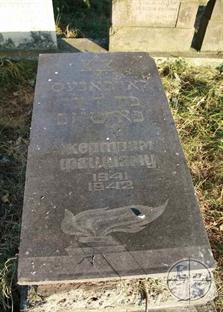 |
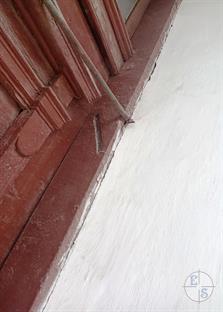 |
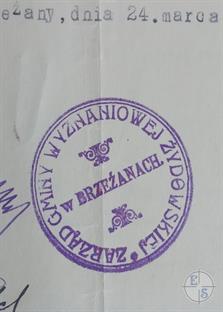 |
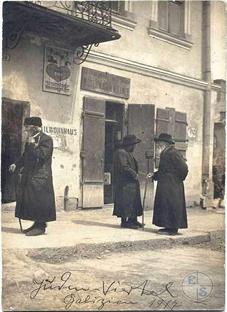 |
| Memorial to victims of Shoah in cemetery | Trace of mezuza on the former Jewish house at Shevchenko str. | Stamp of the Jewish community Berezhany, 1 half 20th century | Jews in Berezhany, 1917 |
Jews made their living mostly as merchants and creditors. The main commerce was of corn, flour, wine, and leather. Most of the commerce outside the town was in Jewish hands. In addition, as of the end of the 17th century, all cattle and livestock business was in Jewish hands. Berezhany exported bulls to Silesia and wheat to Danzig, and all this business was in the hands of a few affluent Jews.
Small retail businesses gradually shifted into Jewish hands, and in 1695 there was no single Christian shop owner in town.
Following the wars with the Kozaks, in the middle of the 17th century, commerce with the East dwindled, and the Polish market was dominated by trade with the West, mainly Germany. These new routes were also largely Jewish.
In 1762 there were in Berezhany 5 Jewish merchants who brought goods from Breslau. Their names were Itzhak Sukenik, Yehoshua Davidov, Herschko Sholimovitz, David Keikhinitski and Herschko Sokalski. It should be mentioned, however, that Berezhany Jews were not wealthy.
Small retail businesses gradually shifted into Jewish hands, and in 1695 there was no single Christian shop owner in town.
Following the wars with the Kozaks, in the middle of the 17th century, commerce with the East dwindled, and the Polish market was dominated by trade with the West, mainly Germany. These new routes were also largely Jewish.
In 1762 there were in Berezhany 5 Jewish merchants who brought goods from Breslau. Their names were Itzhak Sukenik, Yehoshua Davidov, Herschko Sholimovitz, David Keikhinitski and Herschko Sokalski. It should be mentioned, however, that Berezhany Jews were not wealthy.
In 1772 Berezhany became a part of the Habsburg Kingdom. This resulted in major changes in the life of Jews there. During the Habsburg regime, the number of inhabitants in Berezhany reached 3000, half of whom were Jews. The Austrian administration introduced drastic changes, flooding the land and its Jews with new rules and regulations. This resulted in nothing but chaos.
In time, the Austrian administrators understood that radical changes could not be made at once through rules and manipulations. Berezhany's fate was the same as that of the other towns in Galicia.
In 1785, administrative changes were made in Galicia, which was then divided into 18 regions. Berezhany was declared the capital of the 13th region, which included 8 additional towns.
According to the 1789 census, the ten Jewish communities of the Berezhany Region included 2574 families.
In 1812, 6200 Jewish families were counted in the Berezhany region, with 24,760 individuals, and in Berezhany alone, 252 families with 1059 individuals.
The 1880 census counted 10,899 inhabitants in the town, divided as follows: Poles - 3749, Ruthenians - 2404, and Jews - 4712 (43.2% of the total population). In 1900 there were 11,443 inhabitants in Berezhany, of whom 4150 were Poles, 2605 Ruthenians, and 4395 Jews (38.4% of the total population). In the entire Berezhany Region, in 1900, there were 95,164 inhabitants, of whom 10,942 were Jews.
At the end of the 18th century, the economic state of Berezhany Jews was extremely difficult. In addition to their debts to the government, current taxes had to be paid, and the situation worsened rapidly. Very few did well, but most lived in great distress and despair, seeing no light at the end of the tunnel. Berezhany Jews were involved in several occupations. Among Jews, there were highly skilled artisans, mainly bakers, and tailors. Many traded with yarn, wheat, barley, hay, and straw. Some traded with wood since the town was surrounded by forests. Most Jews in town were retailers.
In the 1820s, there were 18 merchants in town, of whom 17 were Jewish.
In 1785, as a result of the Jewish Rules and Regulations, thousands of Jewish families were left with no source of livelihood.
On Aug. 16, 1785, the Emperor ordered his administrators to start settling the Jews in agriculture and farming. In the framework of a program to settle 1400 Jewish families from Galicia, the community of Berezhany had to designate 10 families, and in the greater Berezhany region 69 families.
After a while 69 Jewish families settled in 49 farming plots. 10 Berezhany families settled in 5 farming plots. There were 5 settlers from Kozowa, 9 from Pidhaitsi [Podhitza], 7 from Bursztyn, 3 from Khodorow, 5 from Rozdvill [Rozdol], 4 from Steshalisk [Szczelisk], 8 from Bibrka [Bobrka], 12 from Rohatyn, and 6 from Peremyshlyany [Pszemyslany]. The costs of this project were the responsibility of the communities where the settling took place. In 1804 Graf Fuerstenbush announced that the region of Berezhany filled its farm-settling quota.
By 1882, 40 Jewish families in the entire Berezhany region were still settled in agriculture, 24 were supported by the community and 16 were self-supporting. In 1889 Jews owned 11.3% of the real estate in the region of Berezhany (5,487 hectares).
In 1902 Jews owned 12% of the real estate in the region (5615 hectares [3,875 acres]).
In 1889, 19.5% of the forest land in the region was owned by Jews, and in 1902, 15.1%.
The Jewish population in Berezhany needed loan associations. The JCA [Jewish Colonization Association] began operating in Berezhany in 1906 and helped the Jewish population with interest-free loans. In 1908, the membership in the Berezhany association reached 371, compared to 190 in 1906. From the day of its establishment till Dec. 31, 1908, 753 loans for a total amount of 169,956 Crowns [Krones] were given. Loan association in the Schultse system operated in the Berezhany Region as well.
In time, the Austrian administrators understood that radical changes could not be made at once through rules and manipulations. Berezhany's fate was the same as that of the other towns in Galicia.
In 1785, administrative changes were made in Galicia, which was then divided into 18 regions. Berezhany was declared the capital of the 13th region, which included 8 additional towns.
According to the 1789 census, the ten Jewish communities of the Berezhany Region included 2574 families.
In 1812, 6200 Jewish families were counted in the Berezhany region, with 24,760 individuals, and in Berezhany alone, 252 families with 1059 individuals.
The 1880 census counted 10,899 inhabitants in the town, divided as follows: Poles - 3749, Ruthenians - 2404, and Jews - 4712 (43.2% of the total population). In 1900 there were 11,443 inhabitants in Berezhany, of whom 4150 were Poles, 2605 Ruthenians, and 4395 Jews (38.4% of the total population). In the entire Berezhany Region, in 1900, there were 95,164 inhabitants, of whom 10,942 were Jews.
At the end of the 18th century, the economic state of Berezhany Jews was extremely difficult. In addition to their debts to the government, current taxes had to be paid, and the situation worsened rapidly. Very few did well, but most lived in great distress and despair, seeing no light at the end of the tunnel. Berezhany Jews were involved in several occupations. Among Jews, there were highly skilled artisans, mainly bakers, and tailors. Many traded with yarn, wheat, barley, hay, and straw. Some traded with wood since the town was surrounded by forests. Most Jews in town were retailers.
In the 1820s, there were 18 merchants in town, of whom 17 were Jewish.
In 1785, as a result of the Jewish Rules and Regulations, thousands of Jewish families were left with no source of livelihood.
On Aug. 16, 1785, the Emperor ordered his administrators to start settling the Jews in agriculture and farming. In the framework of a program to settle 1400 Jewish families from Galicia, the community of Berezhany had to designate 10 families, and in the greater Berezhany region 69 families.
After a while 69 Jewish families settled in 49 farming plots. 10 Berezhany families settled in 5 farming plots. There were 5 settlers from Kozowa, 9 from Pidhaitsi [Podhitza], 7 from Bursztyn, 3 from Khodorow, 5 from Rozdvill [Rozdol], 4 from Steshalisk [Szczelisk], 8 from Bibrka [Bobrka], 12 from Rohatyn, and 6 from Peremyshlyany [Pszemyslany]. The costs of this project were the responsibility of the communities where the settling took place. In 1804 Graf Fuerstenbush announced that the region of Berezhany filled its farm-settling quota.
By 1882, 40 Jewish families in the entire Berezhany region were still settled in agriculture, 24 were supported by the community and 16 were self-supporting. In 1889 Jews owned 11.3% of the real estate in the region of Berezhany (5,487 hectares).
In 1902 Jews owned 12% of the real estate in the region (5615 hectares [3,875 acres]).
In 1889, 19.5% of the forest land in the region was owned by Jews, and in 1902, 15.1%.
The Jewish population in Berezhany needed loan associations. The JCA [Jewish Colonization Association] began operating in Berezhany in 1906 and helped the Jewish population with interest-free loans. In 1908, the membership in the Berezhany association reached 371, compared to 190 in 1906. From the day of its establishment till Dec. 31, 1908, 753 loans for a total amount of 169,956 Crowns [Krones] were given. Loan association in the Schultse system operated in the Berezhany Region as well.
In the cultural and educational aspects, Jews experienced great difficulties as well. The Austrian Kingdom, as is well known, tried to “Germanize” the minorities within its territories, including the Jews, and to this end, established schools for Jews. Unlike in Bohemia and Moravia, this educational policy failed in Galicia, where parents refused to send their children to these schools.
According to manipulation by Caesar Joseph II, as of 1789, such schools were established in Galicia, supervised by Hertz Homberg, and the teachers were brought from Bohemia and Moravia. One of the first 48 schools in Galicia was established in Berezhany, and in time there were 100 such schools. A list from 1790 mentions a teacher named Wolf Reinenbakh whose annual salary was 200 Florins.
In 1802 teachers in Berezhany earned 900 Florins a year. Schools of this kind operated also in Rohatyn, with the teacher Shlomo Kornfeld, in Rozdol with the teacher Shimon Bland, and in Bubrka with the teacher Aharon Sharf. In most the number of students diminished in time.
In 1806, 533 children studied in the Berezhany Region schools. The government decided to eliminate all the Jewish schools, and by an order of Caesar Frantz Joseph I, this decision was enforced that same year.
In 1805 the high school moved from Zbarazh to Berezhany. In 1858 there were 5 Jewish students in the high school, and their number increased from year to year so in 1908, 186 out of the total of 825 students were Jewish.
In 1880, 4,712 Jews lived in Berezhany - 43% of the total population; in 1900 - 4395 (38.5%), in 1931 - 3670 Jews.
In the second half of the XIX century the wealthy Jews of Berezhany began buying up land, and by the end of the century owned 12% of all arable land and 20% of forest land.
In the 1820s in Berezhany there were 17 large Jewish merchants who owned trading houses.
In 1901, an association of Jewish artisans was created.
At the beginning of the XX century, 12 Jewish lawyers (out of 14), 2 doctors, several gymnasium teachers and government officials worked in Berezhany.
Since 1874, a Jew has traditionally been elected deputy mayor of Berezhany.
According to manipulation by Caesar Joseph II, as of 1789, such schools were established in Galicia, supervised by Hertz Homberg, and the teachers were brought from Bohemia and Moravia. One of the first 48 schools in Galicia was established in Berezhany, and in time there were 100 such schools. A list from 1790 mentions a teacher named Wolf Reinenbakh whose annual salary was 200 Florins.
In 1802 teachers in Berezhany earned 900 Florins a year. Schools of this kind operated also in Rohatyn, with the teacher Shlomo Kornfeld, in Rozdol with the teacher Shimon Bland, and in Bubrka with the teacher Aharon Sharf. In most the number of students diminished in time.
In 1806, 533 children studied in the Berezhany Region schools. The government decided to eliminate all the Jewish schools, and by an order of Caesar Frantz Joseph I, this decision was enforced that same year.
In 1805 the high school moved from Zbarazh to Berezhany. In 1858 there were 5 Jewish students in the high school, and their number increased from year to year so in 1908, 186 out of the total of 825 students were Jewish.
In 1880, 4,712 Jews lived in Berezhany - 43% of the total population; in 1900 - 4395 (38.5%), in 1931 - 3670 Jews.
In the second half of the XIX century the wealthy Jews of Berezhany began buying up land, and by the end of the century owned 12% of all arable land and 20% of forest land.
In the 1820s in Berezhany there were 17 large Jewish merchants who owned trading houses.
In 1901, an association of Jewish artisans was created.
At the beginning of the XX century, 12 Jewish lawyers (out of 14), 2 doctors, several gymnasium teachers and government officials worked in Berezhany.
Since 1874, a Jew has traditionally been elected deputy mayor of Berezhany.
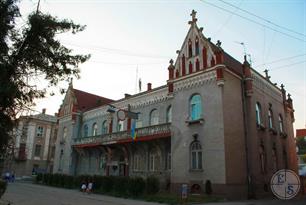 |
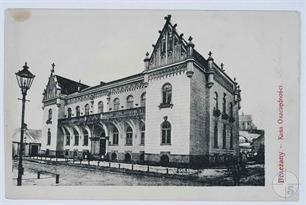 |
 |
| Mutual loan box office, opened in 1908 | The building was erected in a neo -Gothic style | |
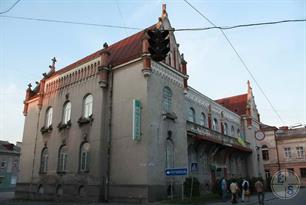 |
 |
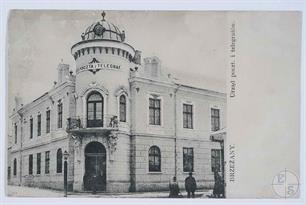 |
| Today this is the most beautiful building in the city | Post office | |
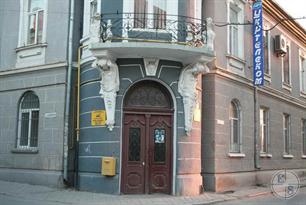 |
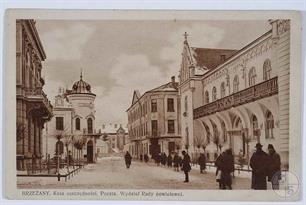 |
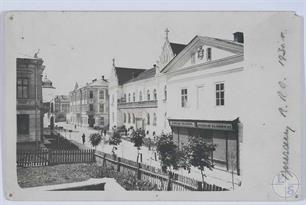 |
| Mutual loan box office and post office |
Cemetery
During WWI the cemetery was harmed. For months, the front between the Austrian and the Russian armies was inside the town, and the Austrian army dug its trenches around the cemetery. From this action and from the artillery shells, the graves, the tombstones and part of the wall suffered heavy damages.
In the years between the two world wars, the Jewish community rehabilitated the cemetery. It was Baruch (Boozia) Stark that took the job upon him and fulfilled it completely. He cleaned the cemetery, rehabilitated the tombstones and fixed the wall.
During the Soviet rule, all the activities of the Jewish community ceased to exist including the supervision of the cemetery.
The Germans and their helpers utilized the cemetery and were responsible for thousands of victims, some in single graves and some in mass graves. They uprooted tombstones and used them to build roads and buildings and ruined the cemetery.
During WWI the cemetery was harmed. For months, the front between the Austrian and the Russian armies was inside the town, and the Austrian army dug its trenches around the cemetery. From this action and from the artillery shells, the graves, the tombstones and part of the wall suffered heavy damages.
In the years between the two world wars, the Jewish community rehabilitated the cemetery. It was Baruch (Boozia) Stark that took the job upon him and fulfilled it completely. He cleaned the cemetery, rehabilitated the tombstones and fixed the wall.
During the Soviet rule, all the activities of the Jewish community ceased to exist including the supervision of the cemetery.
The Germans and their helpers utilized the cemetery and were responsible for thousands of victims, some in single graves and some in mass graves. They uprooted tombstones and used them to build roads and buildings and ruined the cemetery.
Sources:
- Pinkas Hakehillot Polin: Encyclopedia of Jewish Communities, Poland, Volume II, published by Yad Vashem, Jerusalem. Translated by Moshe Kutten, JewishGen, Inc.
- Jewish encyclopedia of Brockhaus & Efron
- Russian Jewish encyclopedia
Photo:
- Eugene Shnaider, 2013
- Tetiana Fedoriv, 2023
- Zynovii Lahush, 1992, Center for Jewish Art
- Мандрівка Старим Кордоном. Бережани 1916-17
- Christian Herrmann, 2023
- Austrian National Library (by Europeana). Brzeżany
- Austrian National Library. Schneefigur der k.u.k.Kraftfahrzeugkolonne 10 in Brzezany
- Fortepan. Ukraine, Berezsani Fortepan 18440
- Pinkas Hakehillot Polin: Encyclopedia of Jewish Communities, Poland, Volume II, published by Yad Vashem, Jerusalem. Translated by Moshe Kutten, JewishGen, Inc.
- Jewish encyclopedia of Brockhaus & Efron
- Russian Jewish encyclopedia
Photo:
- Eugene Shnaider, 2013
- Tetiana Fedoriv, 2023
- Zynovii Lahush, 1992, Center for Jewish Art
- Мандрівка Старим Кордоном. Бережани 1916-17
- Christian Herrmann, 2023
- Austrian National Library (by Europeana). Brzeżany
- Austrian National Library. Schneefigur der k.u.k.Kraftfahrzeugkolonne 10 in Brzezany
- Fortepan. Ukraine, Berezsani Fortepan 18440

- Home
- Shtetls
- Vinnytsia region
- Volyn region
- Dnipro region
- Donetsk region
- Zhytomyr region
- Zakarpattia region
- Zaporizhzhia region
- Ivano-Frankivsk region
- Kyiv region
- Kropyvnytskyi region
- Luhansk region
- Lviv region
- Mykolayiv region
- Odessa region
- Poltava region
- Rivne region
- Sumy region
- Ternopil region
- Kharkiv region
- Kherson region
- Khmelnytskyi region
- Chernihiv region
- Chernivtsi region
- Cherkasy region
- Crimea
- Synagogues
- Cemeteries
- Objects & guides
- Old photos
- History
- Contact
Jewish towns of Ukraine
My shtetl
My shtetl
Donate
Jewish towns of Ukraine
